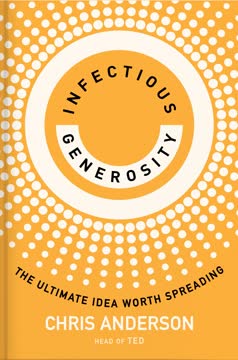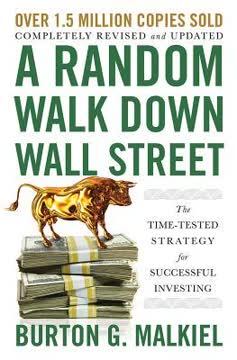重点摘要
1. 早期教孩子理财,塑造终身习惯
威斯康星大学麦迪逊分校的研究人员报告称,许多孩子在三岁时就能够理解诸如价值和交换等经济概念,尽管是非常初步的理解。
早期的财务教育很重要。 三岁的小孩就能理解基本的经济概念,为终身的财务习惯奠定基础。通过日常活动和对话,引入储蓄、消费和分享等简单的理念。
- 使用三罐系统来分配零花钱:储蓄、消费和分享
- 玩与金钱相关的游戏,阅读关于基本财务概念的书籍
- 让孩子参与简单的财务决策,比如在杂货店比较价格
通过将金钱讨论自然地融入家庭生活,父母可以帮助孩子从小建立健康的财务关系。
2. 通过具体目标和匹配计划鼓励储蓄
复利可以让你有一天变得富有。
让储蓄变得具体且有回报。 帮助孩子设定具体的储蓄目标,并理解复利的力量。使用视觉辅助工具和现实例子来展示金钱如何随着时间增长。
- 创建储蓄图表,跟踪实现特定目标的进展
- 提供匹配贡献以激励储蓄(例如,每储蓄一美元奖励50美分)
- 使用在线复利计算器展示长期增长潜力
通过自动化贡献和庆祝里程碑来鼓励定期储蓄习惯。这建立了信心,并强化了延迟满足对财务成功的重要性。
3. 通过适龄责任培养强烈的工作伦理
家务活应该是日常家庭生活的一部分。
通过家务活培养责任感。 给孩子分配适龄的任务,强调他们在家庭中的贡献角色。这培养了强烈的工作伦理,并教会了努力的价值。
- 创建家务活图表,明确期望和截止日期
- 随着孩子长大,逐渐增加责任
- 讨论工作与赚钱之间的关系
虽然家务活不应直接与零花钱挂钩,但可以考虑通过额外任务或创业机会让孩子赚取额外的钱。这帮助他们理解工作与财务回报之间的关系。
4. 教导明智的债务管理和过度消费的危险
如果你买不起某样东西并用信用卡支付,当你收到账单时,你将无法全额支付。然后你会被收取高额利息,这些利息可能会累积到数百甚至数千美元。
强调负责任的信用使用。 教育青少年和年轻人关于信用卡的潜在陷阱以及避免高利息债务的重要性。教他们区分好债务(例如,用于教育的学生贷款)和坏债务(例如,用于不必要购买的信用卡余额)。
- 解释利息的工作原理和持有余额的真实成本
- 鼓励使用借记卡或现金进行日常消费
- 教授预算技能以避免过度消费和依赖信用
通过理解债务的长期后果,年轻人可以做出更明智的财务决策,避免常见的金钱陷阱。
5. 培养精明的消费习惯和财务决策技能
不要相信广告。
培养对消费的批判性思维。 教孩子成为有辨别力的消费者,通过质疑营销策略和做出明智的购买决策。帮助他们理解需求和欲望之间的区别。
- 一起分析广告,讨论说服技巧
- 在购买前比较价格和功能
- 鼓励孩子研究和储蓄大件物品
练习延迟满足,并教导在财务决策中耐心的重要性。这帮助孩子们培养抵制冲动消费的韧性,并养成深思熟虑的金钱管理技能。
6. 优先考虑基本保险覆盖以确保财务安全
如果你是父母,你的工作之一是计划当事情出错时会发生什么——特别是如果你或你的家人生病、受伤甚至去世。
防范财务灾难。 了解并获得必要的保险覆盖,以保障家庭的财务福祉。根据家庭需求优先考虑健康、生命和残疾保险。
基本保险类型:
- 健康保险
- 人寿保险(针对有抚养人的收入者)
- 残疾保险
- 财产保险(房主/租房者)
向年长的孩子解释保险的概念,帮助他们理解其在财务规划和风险管理中的作用。
7. 明智地投资低成本指数基金以实现长期增长
最简单的也是最聪明的。无论你有401(k)、IRA还是两者兼有,你的最佳投资选择都是相同的:低成本指数基金。
接受简单、低成本的投资。 专注于广泛市场的指数基金以实现长期财富积累。这些基金提供多样化,并且通常在长期内表现优于主动管理的基金。
关键投资原则:
- 早开始以利用复利增长
- 定期向退休账户(401(k)、IRA)贡献
- 选择低成本指数基金或ETF
- 保持长期视角,避免市场时机
教育年长的青少年和年轻人关于投资的基础知识,强调早开始和持续一致的重要性。
8. 通过慈善捐赠培养慷慨和社会责任感
研究表明,慈善捐赠——特别是自愿而非强制的捐赠——实际上会让人更快乐。
培养给予的心态。 鼓励孩子分享资源并培养对他人的同情心。这不仅有益于社会,也有助于个人的幸福和福祉。
促进慈善捐赠的方法:
- 将零花钱的一部分用于捐赠
- 一起作为家庭志愿服务
- 一起研究并选择慈善机构
- 讨论捐赠对捐赠者和受赠者的影响
通过将捐赠作为财务讨论和活动的常规部分,父母可以帮助孩子培养终身的社会责任感。
9. 战略性地规划大学融资以最大化价值
平均每个有债务的新大学生欠大约37,000美元的学生贷款。但尽管你的孩子可能在学校里对化学工程、形而上学或埃德娜·圣文森特·米莱作品中的命名学起源有了惊人的理解(不,我也不知道那是什么意思),他可能对如何偿还这些贷款感到困惑。
仔细规划大学费用。 早开始储蓄并探索所有融资选项以最小化债务。理解学生贷款的长期影响,并对大学选择和专业做出明智的决策。
大学融资策略:
- 使用529计划进行税收优惠储蓄
- 申请奖学金和助学金
- 考虑社区大学或州内选项以降低成本
- 了解不同类型的学生贷款和还款选项
与青少年公开讨论大学费用、职业目标以及不同教育路径的潜在投资回报。
10. 作为父母树立良好的财务行为榜样
你不需要成为理财天才才能培养出理财天才!
以身作则。 孩子主要通过观察父母来学习财务习惯。在自己的生活中展示负责任的金钱管理,并让孩子参与适龄的财务讨论和决策。
树立良好财务行为的方法:
- 创建并坚持家庭预算
- 公开讨论财务目标和权衡
- 在消费上表现出克制,并优先考虑储蓄
- 承认并从财务错误中学习
通过培养积极的金钱心态和实践良好的财务习惯,父母可以为孩子的终身财务成功奠定基础。
最后更新日期:
FAQ
What's Make Your Kid A Money Genius (Even If You're Not) about?
- Focus on Financial Literacy: The book is a comprehensive guide for parents to teach their children about money management from preschool through young adulthood.
- Age-Appropriate Lessons: It breaks down financial concepts into age-appropriate lessons, covering topics like saving, spending, debt, and investing.
- Practical Strategies: Beth Kobliner provides practical strategies and real-life anecdotes to help parents engage their children in meaningful conversations about money.
Why should I read Make Your Kid A Money Genius (Even If You're Not)?
- Essential for Modern Parenting: Understanding money is crucial for success in today’s complex financial landscape, and this book equips parents with the tools to teach essential financial skills.
- Expert Insights: Written by Beth Kobliner, a recognized expert in personal finance, the book combines humor with practical wisdom.
- Builds Confidence: It helps parents feel more confident in discussing financial topics with their children, even if they are not financially savvy themselves.
What are the key takeaways of Make Your Kid A Money Genius (Even If You're Not)?
- Start Early: Teaching kids about money should begin as early as preschool, as many financial habits are formed by age seven.
- Encourage Saving: The book emphasizes the importance of saving and provides strategies to help kids learn to delay gratification.
- Avoid Debt: Kobliner stresses the dangers of debt and provides guidance on how to avoid it, highlighting the importance of living within one’s means.
What are the best quotes from Make Your Kid A Money Genius (Even If You're Not) and what do they mean?
- “The stakes have never been higher.”: This quote underscores the urgency of teaching financial literacy in a world where financial independence is increasingly necessary.
- “You don’t need to be a money genius to make your kid a money genius.”: It reassures parents that they don’t need to be experts in finance to teach their children.
- “It’s good to have savings for saving’s sake, too.”: This emphasizes the importance of having savings beyond just for specific purchases, teaching kids the value of a financial cushion.
How does Make Your Kid A Money Genius (Even If You're Not) suggest parents start teaching their kids about money?
- Begin with Basic Concepts: Start with simple concepts like the difference between wants and needs, using everyday situations as teaching moments.
- Use Everyday Situations: Discuss the cost of groceries or explain why a toy can’t be bought to reinforce financial lessons.
- Engage in Conversations: Open dialogue about money is crucial, and parents should feel comfortable discussing their own financial decisions and mistakes.
What age groups does Make Your Kid A Money Genius (Even If You're Not) cover?
- Preschool to Young Adulthood: The book addresses financial education for children from ages 3 to 23, with each chapter tailored to specific age groups.
- Age-Specific Strategies: For preschoolers, the focus is on basic concepts like saving, while older children learn about credit, debt, and investing.
- Lifelong Learning: It encourages parents to continue financial discussions into young adulthood, recognizing that financial education is a lifelong process.
What specific methods does Make Your Kid A Money Genius (Even If You're Not) recommend for teaching kids to save?
- Use Visual Aids: Jars or piggy banks can visually represent savings goals, helping children understand the importance of allocating their money.
- Set Savings Goals: Encourage children to set specific savings goals, teaching them the value of delayed gratification and the satisfaction of reaching a goal.
- Incorporate Family Savings Projects: Involve children in family savings projects, like saving for a vacation, to teach about saving and foster teamwork.
How does Make Your Kid A Money Genius (Even If You're Not) address the topic of debt?
- Understanding Debt: The book explains debt in simple terms, emphasizing the importance of understanding interest rates and repayment terms.
- Avoiding Credit Card Debt: Kobliner stresses avoiding carrying a balance on credit cards, reinforcing the idea of living within one’s means.
- Teaching Responsibility: Parents are encouraged to teach children about the responsibilities of borrowing money, including the consequences of missed payments.
What practical advice does Make Your Kid A Money Genius (Even If You're Not) offer for handling allowance?
- Be Clear and Consistent: Establish clear guidelines for allowance, including what it covers and how much is given, to help children understand budgeting.
- Encourage Saving: Suggest saving a portion of the allowance, teaching kids the importance of setting aside money for future needs.
- Link Allowance to Responsibilities: While not tying allowance to chores, encourage kids to take on extra jobs for additional income, fostering responsibility.
How can parents use Make Your Kid A Money Genius (Even If You're Not) to improve their own financial literacy?
- Learn Alongside Your Kids: Engaging in financial discussions with children can enhance parents' understanding of money management.
- Access to Resources: The book provides a list of resources for further reading, which parents can use to deepen their financial knowledge.
- Practical Application: Applying the lessons learned to their own financial situations can improve parents' money management skills and set a positive example.
What financial habits should I instill in my elementary school child according to Make Your Kid A Money Genius (Even If You're Not)?
- Encourage Saving: Teach them to save a portion of their allowance or gifts, reinforcing the habit of saving for future purchases.
- Discuss Needs vs. Wants: Help them differentiate between needs and wants, fostering critical thinking about spending decisions.
- Introduce Basic Budgeting: Show them how to allocate their allowance for different purposes, instilling a sense of financial responsibility.
What investment concepts should I explain to my middle schooler according to Make Your Kid A Money Genius (Even If You're Not)?
- Understanding Stocks: Explain that stocks represent ownership in a company and can lead to financial growth over time.
- Importance of Diversification: Teach the principle of not putting all eggs in one basket, emphasizing risk reduction through diversified investments.
- Introduce Index Funds: Discuss index funds as a simple way to invest in a broad market, making investing easier to understand without picking individual stocks.
评论
《让你的孩子成为理财天才(即使你不是)》获得了大多数正面评价,读者称赞其实用的建议、易于理解的格式和针对不同年龄段的指导。许多人认为这本书对父母和孩子都很有帮助,欣赏其对话式的语气和现实生活中的例子。一些读者提到书中对美国金融状况的关注,而另一些人则强调其对各种理财话题的全面覆盖。少数批评者提到书中对大学储蓄的重视和偶尔的文化敏感性问题,但总体而言,读者推荐这本书作为教孩子理财的宝贵资源。
Similar Books















